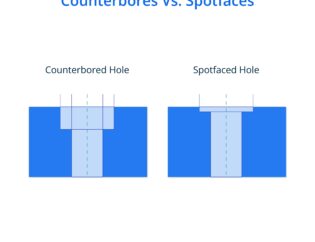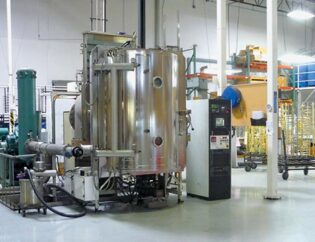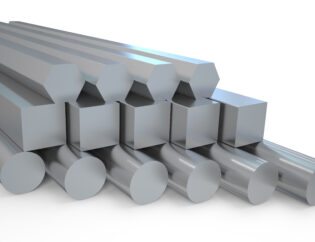SLS nylon, or selective laser sintering nylon, is a revolutionary material in the realm of 3D printing and manufacturing. Its unique properties, including strength, flexibility, and lightweight nature, make it a preferred choice for various applications, from prototyping to end-use parts. Understanding SLS nylon is essential for anyone involved in modern manufacturing or design.
In this guide, readers will explore the fundamental characteristics of SLS nylon, including its composition and advantages over traditional materials. We will delve into the processing techniques that make SLS nylon a standout choice in additive manufacturing. Additionally, practical applications and case studies will illustrate its versatility across industries.
By the end of this guide, readers will gain a comprehensive understanding of SLS nylon, empowering them to make informed decisions in their projects. Whether you are a designer, engineer, or enthusiast, this resource will equip you with the knowledge to leverage SLS nylon effectively in your work.
Why Nylon Is Ideal For SLS 3D Printing Projects
In the realm of 3D printing, material selection is crucial for project success. Nylon has emerged as a favored material for SLS 3D printing due to its unique combination of properties. This article delves into the details of why nylon is highly suitable for SLS, exploring its characteristics, advantages, limitations, and applications.
Comprehensive Insights into SLS and Nylon
Selective Laser Sintering (SLS) is an advanced additive manufacturing technology that uses a high-powered laser to fuse small particles of polymer powder into a solid, three-dimensional object. SLS 3D printing is particularly effective with nylon, a versatile and durable thermoplastic, making it a popular choice for creating functional prototypes and end-use parts.
Technical Features of SLS Nylon
The following table summarizes the key technical features of SLS nylon:
| Feature | Description |
|---|---|
| Material Type | Nylon (Polyamide) |
| Process | Powder bed fusion using a laser |
| Strength | High tensile strength and impact resistance |
| Durability | Excellent wear resistance and longevity |
| Flexibility | Good flexibility, allowing for complex designs |
| Thermal Stability | High melting point, suitable for high-temperature applications |
| Chemical Resistance | Resistant to oils, solvents, and many chemicals |
| Recyclability | Unused powder can be recycled for future prints |
| Surface Finish | Slightly grainy; may require post-processing for smoothness |
Types of Nylon Used in SLS 3D Printing
Different types of nylon are utilized in SLS 3D printing, each with unique properties. The following table compares these types:
| Type of Nylon | Properties | Applications |
|---|---|---|
| Nylon 11 (PA 11) | Bio-based, high elasticity, and impact resistance | Medical implants, flexible parts |
| Nylon 12 (PA 12) | Industry standard, low moisture absorption, high strength | Functional parts, automotive components |
| Glass-Filled Nylon | Reinforced with glass fibers for increased stiffness and strength | Structural parts, load-bearing applications |
| Carbon-Fiber-Reinforced Nylon | Ultra-lightweight, extremely strong, ideal for high-performance parts | Aerospace, robotics, and high-stress applications |
Advantages of Using Nylon in SLS 3D Printing
Nylon’s mechanical properties, including its high strength-to-weight ratio, flexibility, and resistance to wear, make it highly suitable for both prototypes and end-use parts. For instance, a nylon SLS-printed hinge can endure thousands of bending cycles without cracking, outperforming materials like PLA or ABS.
Design Freedom and Geometric Complexity
SLS combined with nylon’s properties allows for unparalleled design flexibility. The absence of the need for support structures due to the surrounding unfused powder enables the production of overhangs, hollow structures, and internal cavities. This is particularly beneficial in applications like medical devices, where customized and complex designs are required.
Thermal Stability
Nylon’s high melting point and thermal resistance ensure stability during the sintering process, minimizing warping and shrinking. It can also perform well in high-temperature end-use applications, such as engine components or industrial machinery.
Chemical Resistance
Nylon’s resistance to oils, solvents, and chemicals makes it an excellent choice for parts exposed to harsh environments. It is resistant to degradation and corrosion when in contact with moisture or certain chemicals and is also suitable for hygienic applications due to its biocompatibility.
Cost-Efficiency and Sustainability
Although the upfront cost of nylon powder may be higher than some other materials, its reusability in the SLS process reduces material waste and overall costs. SLS printing with nylon enables on-demand manufacturing, shorter lead times, and low-volume production, making it a more affordable option compared to traditional methods like injection molding.
Surface Finish and Post-Processing Options
While raw SLS-printed nylon parts have a slightly powdery texture, they can be post-processed to achieve smooth, polished, and colored finishes. Nylon parts have a naturally smooth appearance compared to FDM prints and can be polished for a glossy finish, dyed to obtain vibrant colors, or coated for added protection or aesthetic enhancement.
Common Applications of Nylon in SLS 3D Printing
Nylon has found applications in various industries. In aerospace and automotive, it is used to produce lightweight and durable parts like brackets, housings, and ducts, as well as prototypes capable of withstanding high stress and heat. In healthcare, it enables the fabrication of custom prosthetics, orthotics, and surgical guides, along with medical-grade nylon parts for biocompatible applications.
Aerospace Industry
Aerospace parts require materials that are lightweight, durable, and can withstand extreme conditions. Nylon meets these requirements and enables the production of complex geometries. Applications include brackets and clamps that reduce aircraft weight, ducts and housings that can withstand heat and pressure, and prototypes for wind tunnel testing.
Automotive Industry
The automotive industry values durability, heat resistance, and lightweight materials. Nylon is used for engine bay components like air intake manifolds and covers, as well as interior and exterior parts such as clips and brackets. It is also employed for functional prototypes to test designs.
Healthcare and Medical Devices
Nylon’s biocompatibility, durability, and customizability make it popular in healthcare. It is used for prosthetics and orthotics tailored to patients, surgical guides for accurate procedures, medical device housings, and dental applications.
Consumer Goods Industry
Nylon combines durability and versatility for consumer products. It is used in eyewear frames, wearable devices, electronics cases, and footwear soles and midsoles.
Industrial Manufacturing Tools and Fixtures
In industrial manufacturing, nylon is essential for creating durable, precise, and cost-effective tools and fixtures. Applications include jigs and fixtures for assembly lines, molds for design testing, and components for robotics.
Challenges and Limitations of Nylon in SLS 3D Printing
Despite its advantages, nylon also presents challenges in SLS 3D printing. Its hygroscopic nature can lead to moisture absorption, affecting part quality. Additionally, SLS-printed nylon parts may exhibit a rough surface texture and porosity, requiring post-processing to improve finish and reduce porosity.
Size Limitations
The maximum size of parts is limited by the dimensions of the printer’s build chamber. Large parts may need to be printed in sections and assembled later.
Surface Finish and Post-Processing
SLS parts often have a slightly grainy or powdery surface finish, which may require post-processing for certain applications. Achieving a smooth surface or specific color may require additional finishing steps, increasing production time and cost.
Conclusion
Nylon has established itself as a key material in SLS 3D printing, offering a unique combination of properties that make it highly suitable for a wide range of applications. Its compatibility with the SLS process, mechanical strength, thermal stability, chemical resistance, and design flexibility have driven innovation across multiple industries. As SLS technology and material science continue to evolve, nylon is expected to play an even more significant role in the future of additive manufacturing, enabling the creation of more complex, efficient, and sustainable products.
FAQs
1. What is SLS 3D printing?
SLS (Selective Laser Sintering) is an additive manufacturing process that uses a laser to fuse powdered materials, creating solid parts layer by layer.
2. Why is nylon preferred for SLS printing?
Nylon is favored for its high strength, durability, flexibility, and ability to produce complex geometries without the need for support structures.
3. What are the common applications of nylon in SLS?
Nylon is used in aerospace, automotive, healthcare, consumer goods, and industrial manufacturing for parts like brackets, prototypes, and custom tools.
4. What are the limitations of nylon in SLS printing?
Limitations include moisture absorption, surface finish quality, and size restrictions based on the printer’s build chamber.
5. How can SLS-printed nylon parts be post-processed?
Post-processing techniques include polishing, dyeing, and coating to improve surface finish and aesthetics.






